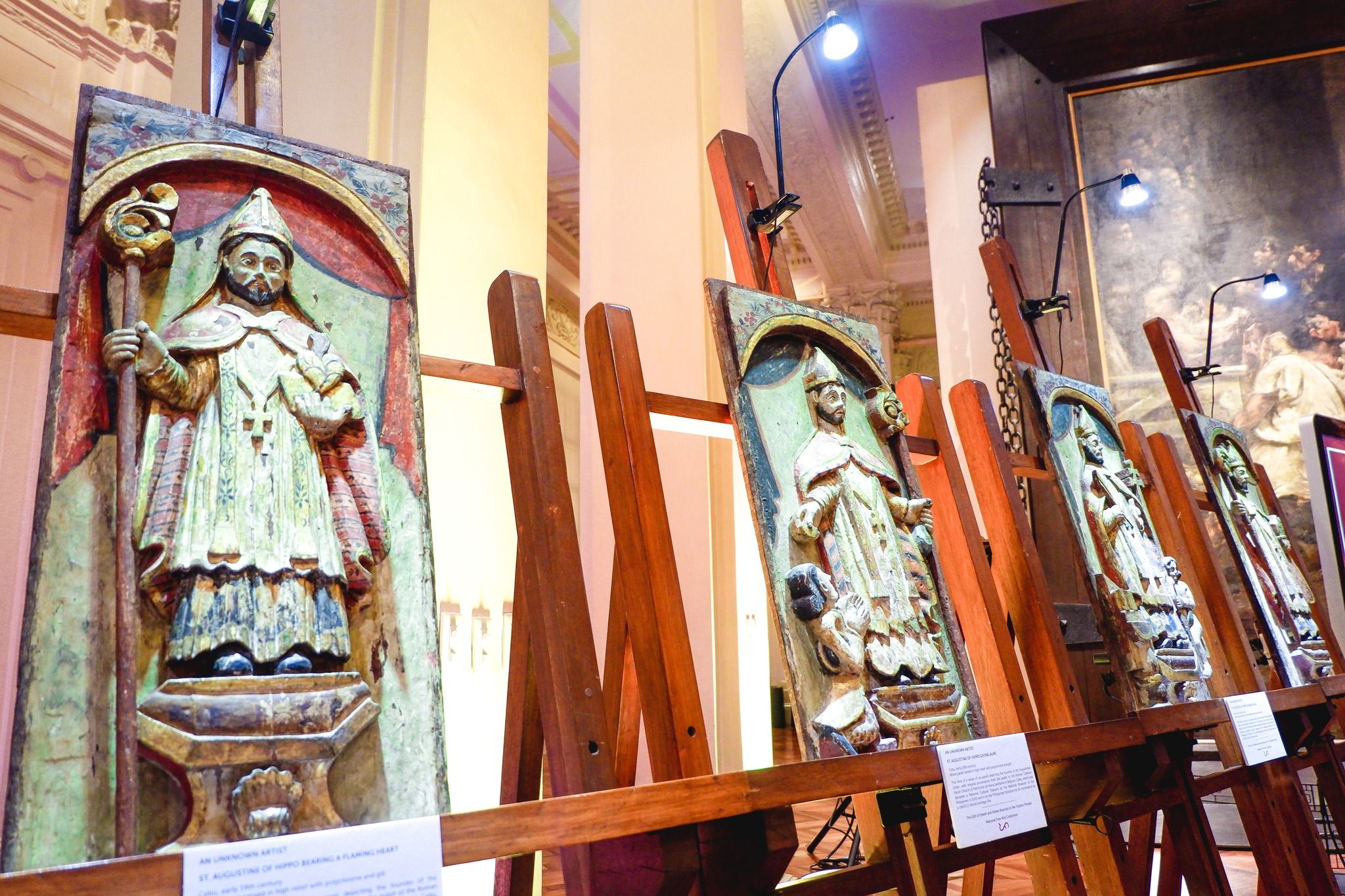Cebu archdiocese says it owns pulpit panels that surfaced in National Museum
ADVERTISEMENT

Welcome, Kapamilya! We use cookies to improve your browsing experience. Continuing to use this site means you agree to our use of cookies. Tell me more!
Cebu archdiocese says it owns pulpit panels that surfaced in National Museum
ABS-CBN News
Published Feb 20, 2024 02:41 PM PHT
 The National Museum of the Philippines formally received early 19th-century panels depicting the founder of the Augustinian Order during a turnover ceremony on Feb. 13, 2024. The panels, which feature the image of Saint Augustine of Hippo, trace its original from the pulpit of the Patrocinio de Maria Santisima Parish Church in Boljoon, Cebu, the museum said. National Museum of the Philippines/FacebookMANILA — The Archdiocese of Cebu on Tuesday asserted that it owns the long-lost pulpit panels that recently wound up at the National Museum.
The National Museum of the Philippines formally received early 19th-century panels depicting the founder of the Augustinian Order during a turnover ceremony on Feb. 13, 2024. The panels, which feature the image of Saint Augustine of Hippo, trace its original from the pulpit of the Patrocinio de Maria Santisima Parish Church in Boljoon, Cebu, the museum said. National Museum of the Philippines/FacebookMANILA — The Archdiocese of Cebu on Tuesday asserted that it owns the long-lost pulpit panels that recently wound up at the National Museum.
 The National Museum of the Philippines formally received early 19th-century panels depicting the founder of the Augustinian Order during a turnover ceremony on Feb. 13, 2024. The panels, which feature the image of Saint Augustine of Hippo, trace its original from the pulpit of the Patrocinio de Maria Santisima Parish Church in Boljoon, Cebu, the museum said. National Museum of the Philippines/FacebookMANILA — The Archdiocese of Cebu on Tuesday asserted that it owns the long-lost pulpit panels that recently wound up at the National Museum.
The National Museum of the Philippines formally received early 19th-century panels depicting the founder of the Augustinian Order during a turnover ceremony on Feb. 13, 2024. The panels, which feature the image of Saint Augustine of Hippo, trace its original from the pulpit of the Patrocinio de Maria Santisima Parish Church in Boljoon, Cebu, the museum said. National Museum of the Philippines/FacebookMANILA — The Archdiocese of Cebu on Tuesday asserted that it owns the long-lost pulpit panels that recently wound up at the National Museum.The four panels "were removed without permission" from the Archdiocesan Shrine of Patrocinio de Maria Santissima in Boljoon town, Cebu Archbishop Jose Palma said.
The four panels "were removed without permission" from the Archdiocesan Shrine of Patrocinio de Maria Santissima in Boljoon town, Cebu Archbishop Jose Palma said.
He said there was no record of any request to deconsecrate the panels for removal or for their transfer to third parties in exchange for money for the parish.
He said there was no record of any request to deconsecrate the panels for removal or for their transfer to third parties in exchange for money for the parish.
"Neither would this have been approved, knowing that these panels are sacred objects of the church, where, for centuries, Augustinian friars delivered sermons to the faithful," he said.
"Neither would this have been approved, knowing that these panels are sacred objects of the church, where, for centuries, Augustinian friars delivered sermons to the faithful," he said.
While the archdiocese understands the National Museum's desire to exhibit the panels to the public, these are considered "sacred" and their "illegal removal constitutes a sacrilege", Palma said.
While the archdiocese understands the National Museum's desire to exhibit the panels to the public, these are considered "sacred" and their "illegal removal constitutes a sacrilege", Palma said.
ADVERTISEMENT
"They should never have been treated, then or now, as mere artworks for exhibition in museums, much less for private appreciation by the collectors who purchased them," he said in a statement.
"They should never have been treated, then or now, as mere artworks for exhibition in museums, much less for private appreciation by the collectors who purchased them," he said in a statement.
"Given the foregoing, the Archdiocese of Cebu hereby asserts its ownership of these panels and requests their immediate return to Boljoon at the pulpit where they were surreptitiously removed," the bishop added.
"Given the foregoing, the Archdiocese of Cebu hereby asserts its ownership of these panels and requests their immediate return to Boljoon at the pulpit where they were surreptitiously removed," the bishop added.
The panels were reportedly stolen in the 1980s due to looting, as recorded in a town resolution.
The panels were reportedly stolen in the 1980s due to looting, as recorded in a town resolution.
But the National Museum said "our donors procured these specific panels through legitimate means."
But the National Museum said "our donors procured these specific panels through legitimate means."
"Moreover, the donors' decision to acquire these artifacts and donate [them] to the Philippines reflects their dedication to preserving cultural heritage and promoting patriotism," it said.
"Moreover, the donors' decision to acquire these artifacts and donate [them] to the Philippines reflects their dedication to preserving cultural heritage and promoting patriotism," it said.
The museum said it was "eager to engage in constructive dialogue and exchange of technical assistance to facilitate sharing the four panels with the people of Cebu as soon as possible."
The museum said it was "eager to engage in constructive dialogue and exchange of technical assistance to facilitate sharing the four panels with the people of Cebu as soon as possible."
ADVERTISEMENT
ADVERTISEMENT


